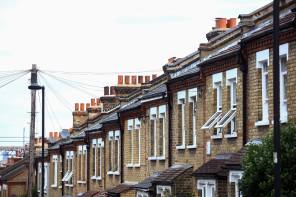

Before the global recession, house sales in the UK numbered around 1.6m a year. After the crisis, they hit a low of 860,000 a year in 2009, recovering to 1.2m in 2014. In its report ‘Missing movers – a long term decline in housing transactions?’ the Council of Mortgage Lenders (CML), now part of the UK Finance trade association, has sought to explain why transactions remain down by some 400,000 on pre-crisis levels.
Pointing to the extraordinary context of the five decades from the 1960s onwards, leading up to the financial crash, the CML explains that this period was characterised by a unique set of economic conditions that enabled many households to move into home ownership.
Price rises over 50 years
It splits the 50 years into two distinct periods: the 1960s to 1980s, and the 1990s to 2000s. The first period featured the highest interest rates for 300 years, but relatively cheap house prices. Consequently, homeowners made long-term gains as house prices rose, inflation eroded debt and incomes grew.
In the second period, rates fell and house prices rose, increasing equity. While house prices rose higher than incomes, lower mortgage rates and looser lending criteria allowed borrowers to service larger mortgages and buyers to move up the ladder.
Current conditions
This is all in contrast, the CML says, to current conditions that feature record-low interest rates, low-income growth, stringent lending criteria and elevated house prices compared to incomes. As a result, many households struggle to advance up the housing ladder, resulting in fewer transactions.
It has identified 80 per cent of the missing 400,000 as mortgaged movers – those already on the housing ladder who are unable or unwilling to move largely due to insufficient equity or borrowing capacity.
It points out that the number of mortgaged movers in 2016 is just above the 2009 low of 315,000. If their numbers had grown in line with the number of first-time buyers, there would have been some 600,000 of them in 2016.
The shortage is the main cause of the lower number of mortgage transactions.
The research identifies demographic as well as financial and economic factors behind the inertia in these homeowners. Chart 1 gives a breakdown and reasons why the numbers have fallen.
The CML suggests that 86 per cent of these mortgaged movers are aged between 30 and 59, but it believes that the biggest fall in transactions has taken place among the 14 per cent aged under 30, and that is largely due to the decline in the number of younger first-time buyers feeding through to become mortgaged movers.
Barriers to growth
So why is this important? The CML explains that because so few new houses are being built, liquidity in the secondary housing market is very important and accounts for 90 per cent of transactions.
A low turnover among homemovers is “a barrier to an efficiently functioning housing market” . The lack of liquidity has economic and social costs: it restricts labour mobility, leading to reduced productivity, lower economic growth and weaker tax revenues. It also means householders’ aspirations are frustrated, so it may result in longer commutes and ultimately people living in the “wrong houses” for longer.
The CML acknowledges that there is also “a complex mix of social, cultural, technological and other non-financial factors” involved. However, it also says the fact that the decline in turnover of privately owned homes followed two deep recessions suggests economic factors are playing a lead role.
The solution
Can anything be done? Using OBR forecasts, the CML finds little prospect of a rise in the number of mortgaged movers over the next 10 years. As to what can be done, it is equally pessimistic.
It argues that any policy focused in isolation on boosting equity, lending, affordability or availability risks having negative effects on one or more of those factors. Moves to increase housing stock or break homebuyer chains could take decades to have a significant impact.
Ultimately, it concludes, these challenges must be tackled based on current circumstances: low interest rates and inflation, high house prices relative to incomes, and an ageing population.
In the absence of new policies, the CML believes movement among mortgage homeowners will "remain constrained".



